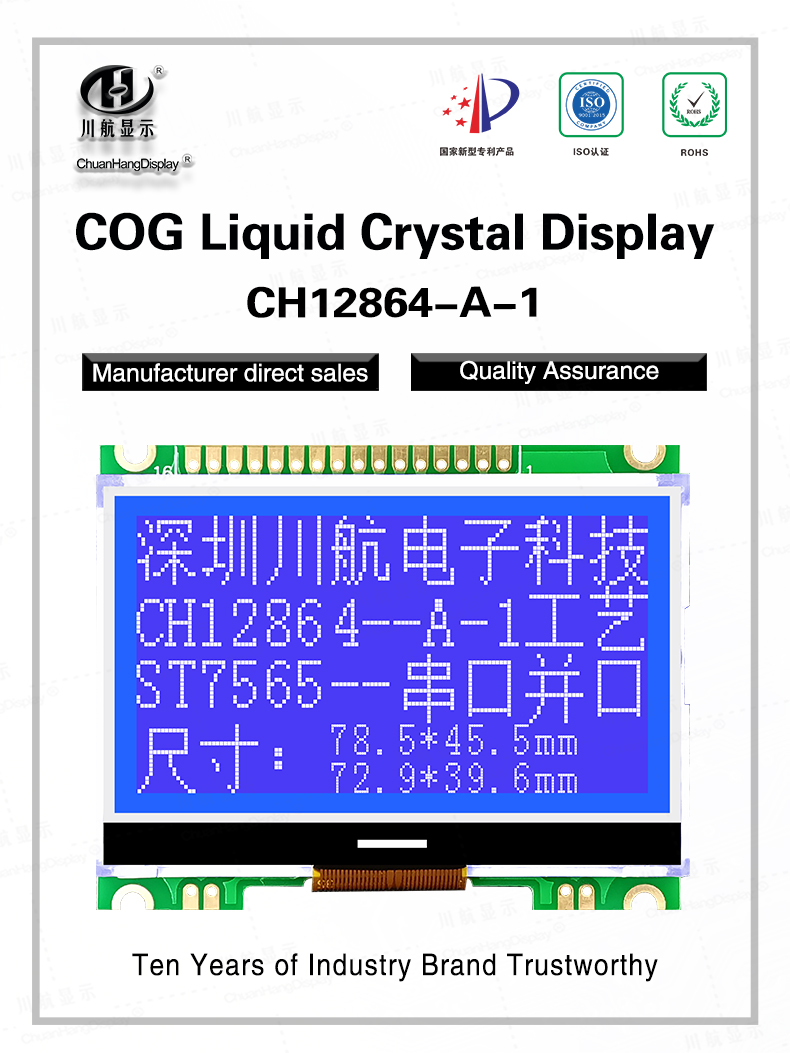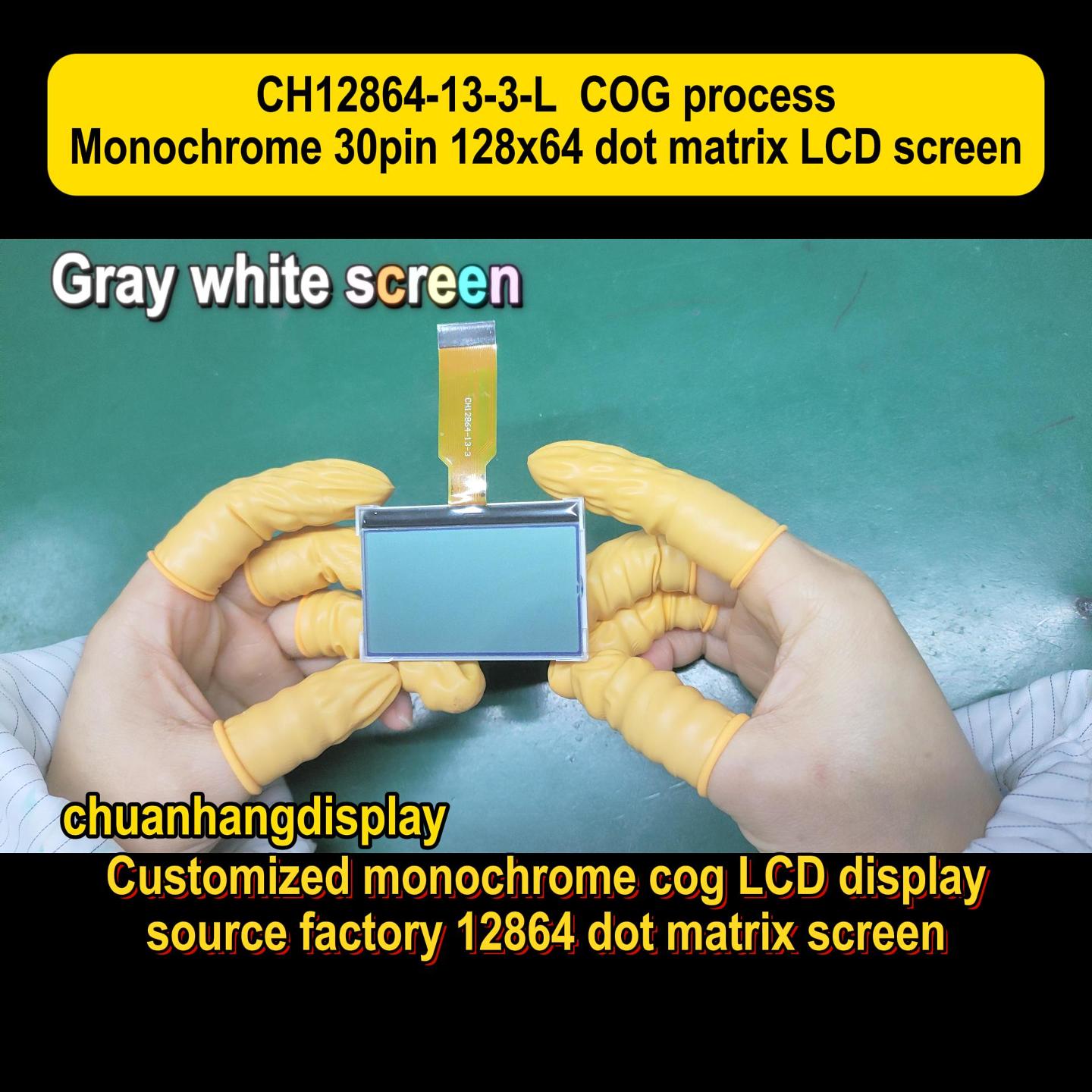In the world of electronic visual interfaces, where high-resolution OLEDs and TFTs often grab the headlines, the humble graphic LCD remains a cornerstone technology for countless applications. Its reliability, cost-effectiveness, and versatility make it an indispensable component across industrial, medical, and consumer sectors. For engineers, product designers, and procurement specialists, understanding the nuances of graphic LCD technology, its customization potential, and how to select a reliable supplier like Chuanhang Display is critical for project success. This article delves into the technical foundations, explores the robust market for custom graphic LCD solutions, and provides a practical framework for making informed sourcing decisions.

A Graphic LCD (Liquid Crystal Display) is a type of display capable of rendering arbitrary images, as opposed to a character LCD, which is limited to showing predefined letters and symbols. At its heart, it consists of a matrix of tiny pixels—each one an individual light valve—controlled by a driver circuit. The most common underlying technology is the STN (Super Twisted Nematic) or its color variant, CSTN, though TFT (Thin-Film Transistor) modules are also a form of advanced graphic LCD.
The fundamental structure includes two glass substrates sandwiching liquid crystals, polarizers, and a backlight system. By precisely controlling the voltage applied to each pixel, the alignment of the liquid crystals is altered, modulating the light from the backlight to create the desired image. This straightforward yet precise mechanism is what gives graphic LCDs their renowned durability and long operational life, especially in environments where more complex displays might falter.
Why does graphic LCD technology continue to thrive? The answer lies in a combination of performance characteristics that are difficult to match with alternative technologies.
Excellent Readability in Sunlight: Unlike emissive displays, graphic LCDs rely on reflected or transmitted light. With a powerful backlight or a reflective polarizer, they offer superb visibility even in direct sunlight, a critical feature for outdoor equipment and portable devices.
Wide Operating Temperature Range: These displays perform consistently across a broad spectrum of temperatures, typically from -20°C to +70°C, with custom graphic LCD solutions available for even more extreme conditions. This makes them ideal for automotive, industrial, and aerospace applications.
Low Power Consumption: Graphic LCDs are inherently power-efficient, as they do not generate their own light for each pixel. This characteristic is paramount for battery-operated devices, from handheld medical instruments to remote sensors.
Cost-Effectiveness: For applications that do not require full-motion video or millions of colors, graphic LCDs provide a significantly lower-cost solution compared to TFT or OLED displays, without compromising on reliability.
The utility of graphic LCD modules spans a diverse range of industries. Their robustness and clarity make them the display of choice for:
Industrial Automation: Human-Machine Interfaces (HMIs) for machinery control, PLCs, and test equipment.
Medical Devices: Patient monitors, diagnostic equipment, and portable infusion pumps where reliability is non-negotiable.
Consumer Electronics: Home appliances, smart thermostats, and audio equipment interfaces.
Automotive: Dashboard instrument clusters, onboard computer displays, and control panels.
Telecommunications: Display interfaces for network infrastructure and testing equipment.
One of the most significant strengths of graphic LCD technology is its adaptability. Off-the-shelf modules are available, but the real value often comes from collaboration with a manufacturer for a custom graphic LCD solution. Chuanhang Display, for instance, specializes in tailoring displays to exact specifications. Key customization areas include:
Size and Resolution: The dimensions and pixel count of the display can be engineered to fit the unique form factor and information density requirements of your product.
Viewing Mode and Backlighting: Choices between transmissive, transflective, or reflective modes, along with backlight color (white, blue, green, etc.) and type (LED, EL), allow optimization for specific lighting environments.
Interface and Driver IC: The communication protocol (e.g., SPI, I2C, 8080/6800 parallel) can be selected to seamlessly integrate with your main controller board.
Special Optical Bonding: For harsh environments, optical bonding fills the air gap between the graphic LCD and its cover glass with a resin. This reduces condensation, minimizes glare, and enhances mechanical durability.
Touchscreen Integration: Resistive or capacitive touch panels can be integrated to create a complete interactive interface module.

Choosing the right partner for your graphic LCD needs is as important as the technical specifications themselves. A supplier like Chuanhang Display stands out by offering more than just a product catalogue.
Engineering Support: Look for a supplier with a strong engineering team capable of providing technical support, from initial concept through to production. They should be able to advise on the best graphic LCD technology for your application.
Manufacturing Capability and Quality Control: Inquire about their production facilities, quality management certifications (like ISO 9001), and their testing procedures for reliability, temperature cycling, and visual inspection.
Prototyping and Flexibility: A good supplier will offer a prototyping service, allowing you to validate a custom graphic LCD design before committing to a full production run.
Supply Chain Stability: In today's global market, a supplier's ability to guarantee a stable and long-term supply of components is crucial to avoid production delays.
The price of a graphic LCD module is influenced by several factors. Understanding these can help in budgeting and making cost-performance trade-offs:
Volume: Unit cost decreases significantly with higher production volumes.
Customization Level: A fully custom graphic LCD with unique glass, FPC, and bonding will have higher NRE (Non-Recurring Engineering) and unit costs than a slightly modified standard module.
Technology and Performance: Higher resolutions, wider temperature ranges, and faster response times generally command a premium.
Additional Features: Integrated touchscreens, special coatings, and optical bonding add to the final cost.
When requesting a quote from a supplier like Chuanhang Display, providing clear and detailed specifications will ensure you receive an accurate and competitive price.
While newer technologies emerge, the graphic LCD is far from obsolete. Its evolution continues, focusing on enhancing performance within its core strengths. We see trends towards even lower power consumption, improved viewing angles through advanced film compensation, and the integration of more driver functionality directly into the module to simplify design-in for engineers. For many applications, the graphic LCD offers an unbeatable balance of performance, durability, and cost.
Q1: What is the main difference between a character LCD and a graphic LCD?
A1: A character LCD is designed to display only a fixed set of alphanumeric characters and simple symbols from a built-in library. A graphic LCD, in contrast, has a pixel matrix that allows you to control each pixel individually, enabling the display of any image, shape, or custom font.
Q2: Can graphic LCDs display color, or are they only monochrome?
A2: While monochrome (black and white, blue and white, etc.) graphic LCDs are very common, color versions are widely available. CSTN (Color STN) and TFT are both types of color graphic LCD technologies, with TFT offering superior color performance and faster response times.
Q3: How long is the typical lifespan of a graphic LCD backlight?
A3: The lifespan is primarily determined by the backlight's LEDs. High-quality LED backlights, like those used in modules from Chuanhang Display, typically have a half-life (the point at which brightness drops to 50%) of 50,000 hours or more, ensuring many years of reliable operation.
Q4: What does the process of developing a custom graphic LCD usually involve?
A4: The process typically starts with a detailed requirement discussion. The supplier then provides a proposal and, upon agreement, creates initial design documents and a prototype for your evaluation. After prototype approval, a pre-production run is conducted, followed by final qualification and mass production. A reputable supplier will guide you through each step.
Q5: Are graphic LCDs suitable for use in environments with extreme temperature variations?
A5: Yes, this is one of their key advantages. Standard graphic LCD modules operate reliably from -20°C to +70°C. For more extreme conditions, Chuanhang Display and other specialists offer custom graphic LCD solutions with an extended temperature range, such as -30°C to +80°C or wider, using specific liquid crystal mixtures and components.